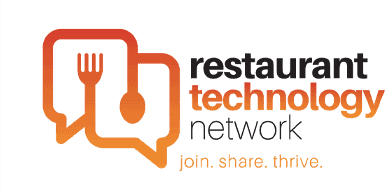The reality of COVID-19’s devastating effect on the restaurant industry can’t be understated.
Despite these less-than-ideal circumstances, there are ways that restaurants can maximize the resources they do have to stay afloat as vaccines and new mitigation strategies begin to indicate a light at the end of this long COVID-19 tunnel.
Sanitation
Top of mind for most consumers as they consider patronizing a local restaurant is sanitation, and rightly so. COVID-19 has made us all sticklers when it comes to the proper cleaning procedures for keeping us and our families safe.
We’ve covered best practices for increasing customer confidence in food safety, but it’s a topic that bears repetition. Procedures emphasized by the CDC guidelines in response to COVID-19 include:
- Prohibiting sick employees in the workplace
- Strict handwashing practices that include how and when to wash hands
- Strong procedures and practices to clean and sanitize surfaces
- Ensuring the person in charge of a food service facility is a certified food safety manager, and is on-site at all times during operating hours
- Stocking coolers to no more than minimum levels if providing “grab-and-go” service.
The more completely you can follow these procedures – and communicate those precautions to your customers – the more likely customers will be to keep coming back for their favorite menu items.
Takeout and delivery
If you haven’t already explored the full gamut of what takeout and delivery options can do for your business, now is the time. And we’re not talking about some half-hearted, slapdash mention of these options on your website, or worse, a notice on your front door. It’s not enough just to offer delivery and takeout, you need to make sure people know about it.
In addition to getting the word out, you’ll also want to remember the sanitary procedures mentioned above and do everything you can to limit or remove the need for exchanging money or credit cards. Luckily there are a variety of technology solutions that can help make that happen, including OneDine’s contactless platform that eliminates the need for hand-held menus and the passing of credit cards, receipt holders, pens, etc.
Maximum occupancy
With dine-in occupancy rates severely restricted in most areas – and becoming more so as we move into the winter months, it’s easy to place focus on takeout and delivery alone, but it’s vital to not forget about the in-person experience.
Yes, occupancy limits as low as 25% make keeping your doors open seem like a losing proposition. But, if you keep tables full to the greatest extent legally possible, that’s still an added 25% on top of whatever you’re bringing in from other, more creative service models.
Don’t let perfect be the enemy of good. Take advantage of every opportunity to keep the kitchen humming.
DIY
Meal kits shipped to your home complete with instructions on how to create restaurant-quality meals in your own kitchen have been gaining popularity for some time now. As restaurants around the world have been forced to close their dining rooms, some have realized that they’re in a position to not only jump onto but to lead that bandwagon by assembling and providing pre-measured kits for their own popular menu items.
Presented properly, these services create a win-win situation in which the restaurant still gets the sale, while the customer gets both a meal they know they’ll enjoy and an activity to help keep them occupied during long quarantined nights.
Virtual happy hour
Restaurants aren’t only about eating, they’re also social hubs. This may be the aspect of the industry that people most find themselves missing as the COVID-19 crisis continues to develop.
To help fill this gap and keep themselves top-of-mind for their customers, some restaurant owners are using video conferencing services like Zoom to create virtual meeting spaces and alternative ways for people to get together without leaving the safety of their homes. Some offer chef-taught online cooking lessons (perhaps in conjunction with those pre-measured meal kits). Some offer virtual trivia nights, bartending lessons, and more.
Smaller coffee shops might even keep a video conferencing room open so that patrons can have their coffee delivered and still enjoy it in the (virtual) company of the other “regulars,” maybe over an online game of cards.
Communicate, communicate, communicate
Whatever methods you choose to stay afloat, get the word out in any way you can.
Update your website, and make sure it’s mobile compatible. Studies show that over 80% of consumers have searched for a restaurant on their mobile devices. That’s a number that’s undoubtedly grown as a result of COVID-19 quarantine.
Up your social media game. 72% of customers have based their choice of restaurant on Facebook ratings and comments.
Remain active – and interactive – on your social media accounts. Show appreciation for positive comments. Over 71% of customers say they’re more likely to recommend a restaurant that quickly responds to them on social media and customers generally spend up to 40% more at restaurants that engage with them on social media.
Share your hours, open locations, special offerings and deals, delivery platforms, and safety measures. In a time when so much seems so uncertain, knowledge is comfort. And the fewer effort customers have to put into learning about your services, the more likely they’ll be to use them.





